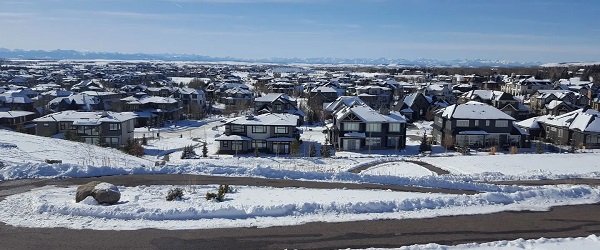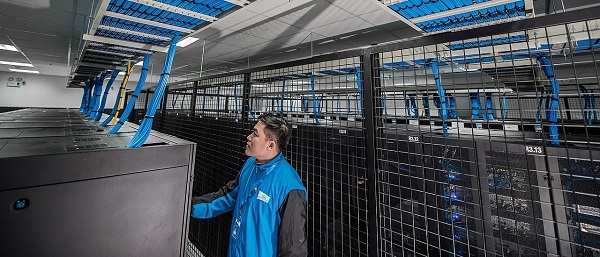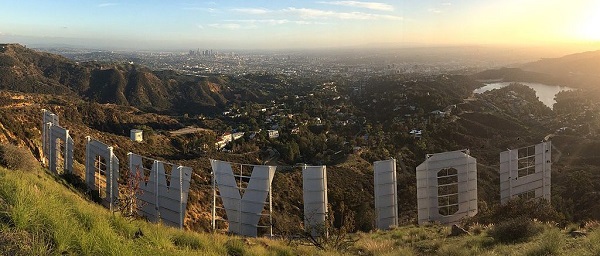Alberta
Three quarters of Albertans are double vaccinated. Province launches third booster shot.
Vaccine eligibility expands, milestone hit
More than 75 per cent of eligible Albertans are now fully immunized against COVID-19 while thousands more Albertans are now eligible for a third COVID-19 vaccine dose.
Starting Oct. 6, Albertans age 75 and older and First Nations, Inuit and Métis people age 65 and older can begin booking for a third dose at least six months after their second dose.
Acting on the recommendations of the Alberta Advisory Committee on Immunization, Alberta is one of the first provinces in Canada to offer third doses of vaccine to these age groups. Older Albertans, along with those who are immunocompromised or in seniors supportive living, are receiving third doses because of their increased risk of hospitalization, death or other severe outcomes from COVID-19.
Health officials will continue to monitor all emerging evidence on vaccine effectiveness across Canada and around the world.
“We are pleased to offer additional protection for those Albertans who are most at risk of serious illness from COVID-19. Getting fully vaccinated is not only important to help protect yourself and others, but is also vital to protecting our health-care system.”
“We know that COVID-19 can be especially dangerous for our older populations and continue to do everything we can to keep them safe. Over three-quarters of eligible Albertans are now fully immunized. I encourage everyone to think of their family, friends and neighbours and get fully vaccinated as soon as possible.”
“The data shows that seniors may experience waning immunity approximately six months after their second dose. A third dose will be beneficial for our elderly population to ensure they have the best protection from COVID-19 as we move through this fourth wave. At this time, the evidence does not support a need for additional doses for the general population, but we continue to monitor the data and will adapt as new evidence emerges.”
Double dose milestone hit
Currently, 75.1 per cent of eligible Albertans are fully vaccinated against COVID-19 after receiving two vaccine doses.
In addition, 84.5 per cent of eligible Albertans have received at least one dose. More than 500,000 first, second and third doses have been administered since Sept. 3.
All eligible Albertans are strongly encouraged to get fully vaccinated soon as possible to protect themselves, their families and their communities.
Albertans eligible for third doses
In addition to Albertans aged 75 and older, and First Nations, Métis and Inuit people aged 65 and older, third doses are available for seniors living in congregate care. These individuals are at the highest risk of severe outcomes and potential spread within congregate living sites, and will receive their doses on-site.
A number of immunocompromising conditions also qualify for an additional dose at least eight weeks after a second dose. For a full list, visit alberta.ca/vaccine.
Additional mRNA doses are also available to Albertans who are travelling to a jurisdiction that does not accept visitors who have been vaccinated with Covishield/AstraZeneca or mixed doses.
Anyone in the general population who receives a complete two-dose COVID-19 vaccine series can be confident that they have strong protection against severe illness and hospitalization due to COVID-19.
Booking a third-dose appointment
Eligible Albertans aged 75 and older and First Nations, Metis and Inuit persons living off-reserve can book appointments for third doses at participating pharmacies and physician clinics by using the booking system at alberta.ca/vaccine. Albertans can also call 811, participating pharmacies or participating physicians’ offices, or find a community pharmacy providing walk-in vaccinations.
Individuals aged 65 and older who live on a First Nations reserve will be able to access third doses through local public health clinics on-reserve.
If you are deemed ineligible due to your age, or six months has not passed since receiving your second dose, you will be asked to re-book when eligible.
Outdoor gathering restrictions
To reduce the spread of COVID-19, an updated public health measure will apply to all outdoor private social gatherings effective Oct. 6:
- Outdoor private social gatherings are limited to a maximum of 20 people, with two-metre physical distancing between households at all times. This is a decrease from the previous limit of 200 attendees.
- All other previously public health measures remain in place at this time.
- Additional information on all the public health measures is available at alberta.ca/covid19.
Alberta
‘Weird and wonderful’ wells are boosting oil production in Alberta and Saskatchewan

From the Canadian Energy Centre
Multilateral designs lift more energy with a smaller environmental footprint
A “weird and wonderful” drilling innovation in Alberta is helping producers tap more oil and gas at lower cost and with less environmental impact.
With names like fishbone, fan, comb-over and stingray, “multilateral” wells turn a single wellbore from the surface into multiple horizontal legs underground.
“They do look spectacular, and they are making quite a bit of money for small companies, so there’s a lot of interest from investors,” said Calin Dragoie, vice-president of geoscience with Calgary-based Chinook Consulting Services.
Dragoie, who has extensively studied the use of multilateral wells, said the technology takes horizontal drilling — which itself revolutionized oil and gas production — to the next level.
“It’s something that was not invented in Canada, but was perfected here. And it’s something that I think in the next few years will be exported as a technology to other parts of the world,” he said.
Dragoie’s research found that in 2015 less than 10 per cent of metres drilled in Western Canada came from multilateral wells. By last year, that share had climbed to nearly 60 per cent.
Royalty incentives in Alberta have accelerated the trend, and Saskatchewan has introduced similar policy.
Multilaterals first emerged alongside horizontal drilling in the late 1990s and early 2000s, Dragoie said. But today’s multilaterals are longer, more complex and more productive.
The main play is in Alberta’s Marten Hills region, where producers are using multilaterals to produce shallow heavy oil.
Today’s average multilateral has about 7.5 horizontal legs from a single surface location, up from four or six just a few years ago, Dragoie said.
One record-setting well in Alberta drilled by Tamarack Valley Energy in 2023 features 11 legs stretching two miles each, for a total subsurface reach of 33 kilometres — the longest well in Canada.
By accessing large volumes of oil and gas from a single surface pad, multilaterals reduce land impact by a factor of five to ten compared to conventional wells, he said.
The designs save money by skipping casing strings and cement in each leg, and production is amplified as a result of increased reservoir contact.
Here are examples of multilateral well design. Images courtesy Chinook Consulting Services.
Parallel
Fishbone
Fan
Waffle
Stingray
Frankenwells
Alberta
Alberta to protect three pro-family laws by invoking notwithstanding clause

From LifeSiteNews
Premier Danielle Smith said her government will use a constitutional tool to defend a ban on transgender surgery for minors and stopping men from competing in women’s sports.
Alberta Premier Danielle Smith said her government will use a rare constitutional tool, the notwithstanding clause, to ensure three bills passed this year — a ban on transgender surgery for minors, stopping men from competing in women’s sports, and protecting kids from extreme aspects of the LGBT agenda — stand and remain law after legal attacks from extremist activists.
Smith’s United Conservative Party (UCP) government stated that it will utilize a new law, Bill 9, to ensure that laws passed last year remain in effect.
“Children deserve the opportunity to grow into adulthood before making life-altering decisions about their gender and fertility,” Smith said in a press release sent to LifeSiteNews and other media outlets yesterday.
“By invoking the notwithstanding clause, we’re ensuring that laws safeguarding children’s health, education and safety cannot be undone – and that parents are fully involved in the major decisions affecting their children’s lives. That is what Albertans expect, and that is what this government will unapologetically defend.”
Alberta Justice Minister and Attorney General Mickey Amery said that the laws passed last year are what Albertans voted for in the last election.
“These laws reflect an overwhelming majority of Albertans, and it is our responsibility to ensure that they will not be overturned or further delayed by activists in the courts,” he noted.
“The notwithstanding clause reinforces democratic accountability by keeping decisions in the hands of those elected by Albertans. By invoking it, we are providing certainty that these protections will remain in place and that families can move forward with clarity and confidence.”
The Smith government said the notwithstanding clause will apply to the following pieces of legislation:
-
Bill 26, the Health Statutes Amendment Act, 2024, prohibits both gender reassignment surgery for children under 18 and the provision of puberty blockers and hormone treatments for the purpose of gender reassignment to children under 16.
-
Bill 27, the Education Amendment Act, 2024, requires schools to obtain parental consent when a student under 16 years of age wishes to change his or her name or pronouns for reasons related to the student’s gender identity, and requires parental opt-in consent to teaching on gender identity, sexual orientation or human sexuality.
-
Bill 29, the Fairness and Safety in Sport Act, requires the governing bodies of amateur competitive sports in Alberta to implement policies that limit participation in women’s and girls’ sports to those who were born female.”
Bill 26 was passed in December of 2024, and it amends the Health Act to “prohibit regulated health professionals from performing sex reassignment surgeries on minors.”
As reported by LifeSiteNews, pro-LGBT activist groups, with the support of Alberta’s opposition New Democratic Party (NDP), have tried to stop the bill via lawsuits. It prompted the Smith government to appeal a court injunction earlier this year blocking the province’s ban on transgender surgeries and drugs for gender-confused minors.
Last year, Smith’s government also passed Bill 27, a law banning schools from hiding a child’s pronoun changes at school that will help protect kids from the extreme aspects of the LGBT agenda.
Bill 27 will also empower the education minister to, in effect, stop the spread of extreme forms of pro-LGBT ideology or anything else to be allowed to be taught in schools via third parties.
Bill 29, which became law last December, bans gender-confused men from competing in women’s sports, the first legislation of its kind in Canada. The law applies to all school boards, universities, and provincial sports organizations.
Alberta’s notwithstanding clause is like all other provinces’ clauses and was a condition Alberta agreed to before it signed onto the nation’s 1982 constitution.
It is meant as a check to balance power between the court system and the government elected by the people. Once it is used, as passed in the legislature, a court cannot rule that the “legislation which the notwithstanding clause applies to be struck down based on the Charter of Rights and Freedoms, the Alberta Bill of Rights, or the Alberta Human Rights Act,” the Alberta government noted.
While Smith has done well on some points, she has still been relatively soft on social issues of importance to conservatives , such as abortion, and has publicly expressed pro-LGBT views, telling Jordan Peterson earlier this year that conservatives must embrace homosexual “couples” as “nuclear families.”
-

 Alberta2 days ago
Alberta2 days agoAlberta on right path to better health care
-
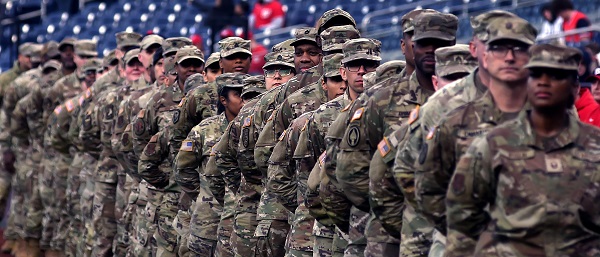
 Daily Caller2 days ago
Daily Caller2 days agoDemocrats Explicitly Tell Spy Agencies, Military To Disobey Trump
-

 Daily Caller2 days ago
Daily Caller2 days agoALAN DERSHOWITZ: Can Trump Legally Send Troops Into Our Cities? The Answer Is ‘Wishy-Washy’
-

 Crime1 day ago
Crime1 day ago‘Modern-Day Escobar’: U.S. Says Former Canadian Olympian Ran Cocaine Pipeline with Cartel Protection and a Corrupt Toronto Lawyer
-

 Business24 hours ago
Business24 hours agoCanada is failing dismally at our climate goals. We’re also ruining our economy.
-
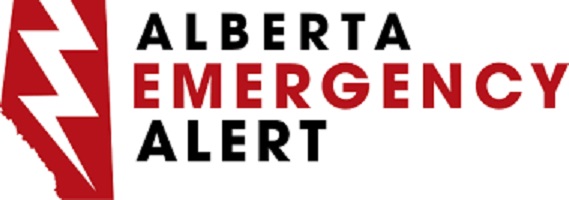
 Alberta2 days ago
Alberta2 days agoAlberta Emergency Alert test – Wednesday at 1:55 PM
-

 Health14 hours ago
Health14 hours agoCDC’s Autism Reversal: Inside the Collapse of a 25‑Year Public Health Narrative
-

 Alberta2 days ago
Alberta2 days agoCarney government’s anti-oil sentiment no longer in doubt













